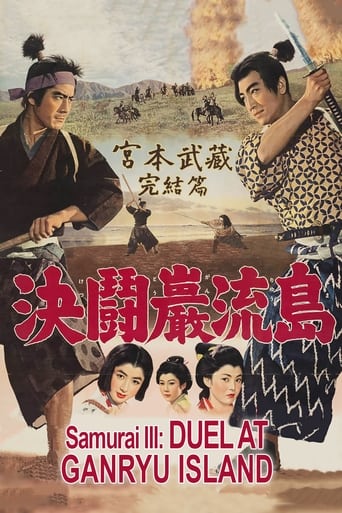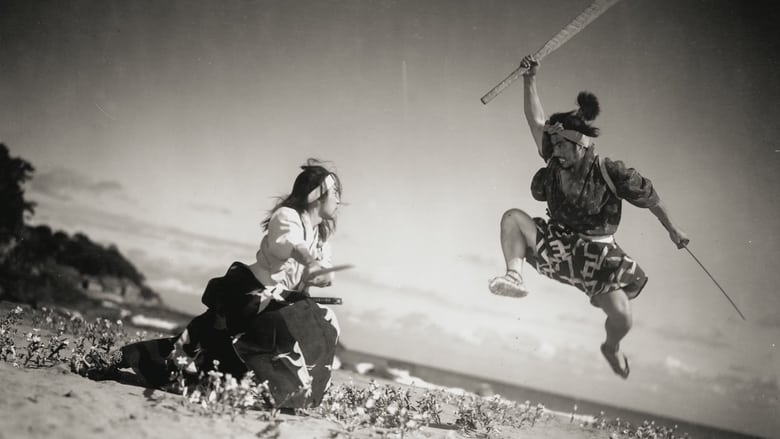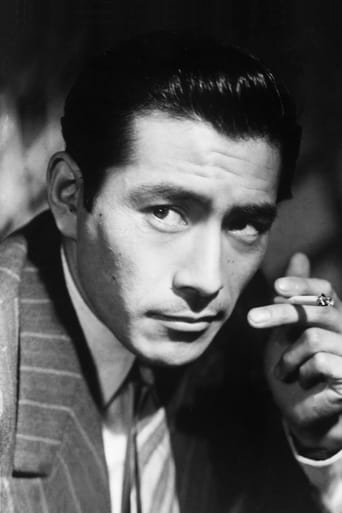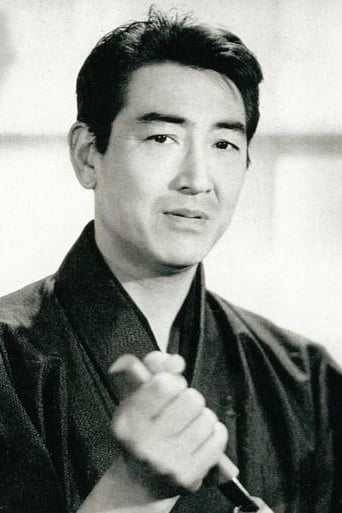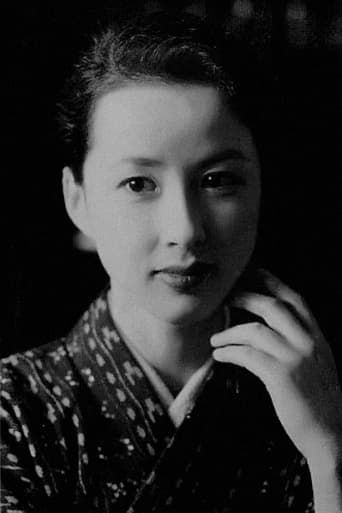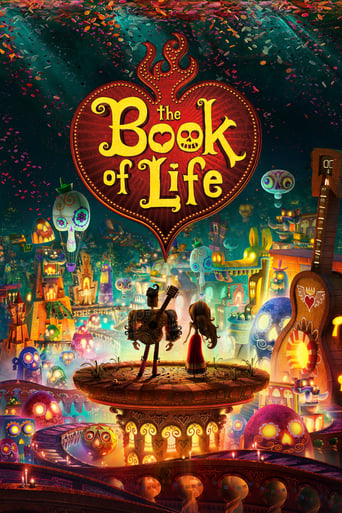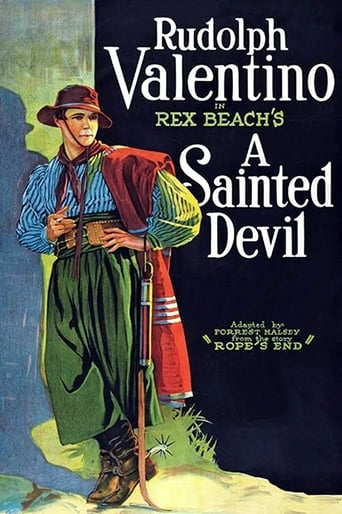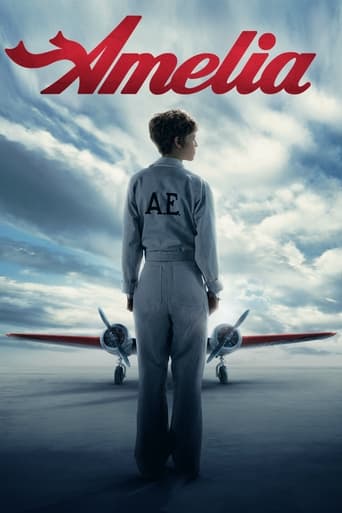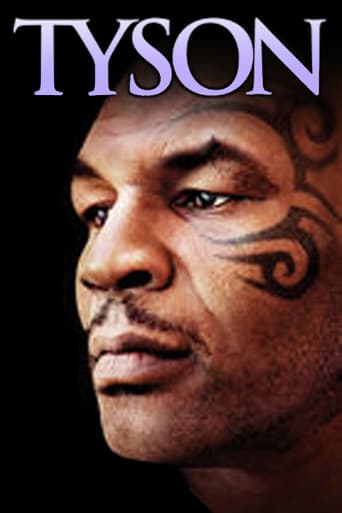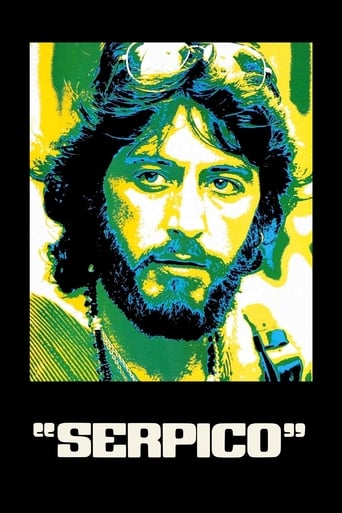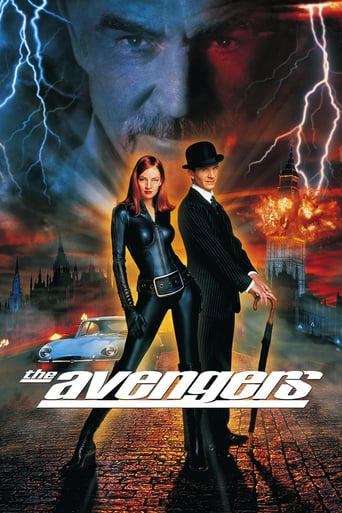Samurai III: Duel at Ganryu Island (1956)
A humble and simple Takezo abandons his life as a knight errant. He's sought as a teacher and vassal by Shogun, Japan's most powerful clan leader. He's also challenged to fight by the supremely confident and skillful Sasaki Kojiro. Takezo agrees to fight Kojiro in a year's time but rejects Shogun's patronage, choosing instead to live on the edge of a village, raising vegetables. He's followed there by Otsu and later by Akemi, both in love with him. The year ends as Takezo assists the villagers against a band of brigands. He seeks Otsu's forgiveness and accepts her love, then sets off across the water to Ganryu Island for his final contest.
Watch Trailer
Cast


Similar titles
Reviews
Excellent, a Must See
What a freaking movie. So many twists and turns. Absolutely intense from start to finish.
It's an amazing and heartbreaking story.
Excellent and certainly provocative... If nothing else, the film is a real conversation starter.
This is the third part of a comment on The "Samurai Trilogy," following those on the pages for Miyamoto Musashi (Samurai I) and Ichijoji no Ketto (Samurai II). Ketto Genryujima (Duel at Genryu Island) can be seen as part 1 come full cycle, as the young Kojiro seeks validation through a confrontation in arms with Musashi. In fact this is mostly his movie in spite of Mifune's top billing, and Musashi's love interest Otsu is likewise partially eclipsed by her rival and foil Akemi and her machinations. The climactic finish is deferred many times, but each bit of side action comes forth with a sense of necessity, and its ethical principle is illustrated in a way that comes naturally from the context, and is not imposed with a didactic tone. By the time the duel happens, both participants have grown as men-- appreciative of the grand scheme of things, humbled by the small part they play, and respectful of each other. We do see the hateful side of the "bad guy," but such glimpses are then followed by an honorable act of some sort, or by evidence that he has reflected on his methods, and come to see a better way he should've followed. Inagaki's films, especially these three, have always been the best-regarded of the "classy" samurai movies-- I lived in Japan during the time these films were made, and I can tell you there were plenty of "trashy" ones! Today's pulp doesn't hold a candle. However seriously these films were taken in Japan, in the west there's been a tendency to pigeonhole them as samurai flicks, and the trilogy is only recently being seen as one major work, though I've still yet to see it shown all at once, as a single entity. Why that is, I'll never know, as the whole thing is uniform in quality, and the parts work as an epic accumulation as well as they stand on their own. The first episode did win the Oscar for best Foreign-language film, but interest in the rest of the trilogy was sporadic-- the films were issued and re-issued under generic-sounding names over the years, and when spoken of together it was in an off-putting way, simply as Samurai 1, 2 and 3. But Inagaki's masterpiece is the capstone of a distinguished career that began in the prewar silent era, and though he was deemed too "Japanese" and too specialized in Bushido culture and the prewar past by western critics, this work transcends all those inapt criticisms and is very satisfying fare to native and foreign viewer alike-- I am delighted to present the intact trilogy in support of these claims. (Look for it on YouTube, on the cuFFBlinks channel).
This film is the final installment of director Hiroshi Inagaki's "Samurai Trilogy," three films covering the life of Musashi Miyamoto (Takezo,) Japan's most famous swordsman of the early 17th century and perhaps of all time.He was an icon of the warrior-philosopher model. He survived numerous duels to the death and retired to painting and writing. His best known work is the "Book of Five Rings," a book which gained popularity recently when it was championed by the Harvard Business School.All three films of Inagaki's trilogy, made in 1954, 1955, and 1956, are part of the elite Criterion Collection of classic films.Briefly, this movie resolves the conflict of the two women in Takezo's life, Otsu and Akemi, and leads up to Musashi's showdown with the second most famous swordsman of the day, Sasaki Kojiro. This is the famous Duel at Ganryu Island of the title.Although I cannot appreciate the Japanese language and must rely on the English subtitles for the meaning of dialog, I do appreciate the beauty of this early widescreen color film. (I believe Tojoscope is a Japanese version of cinemascope.) One could take almost every frame of this film and it would make a stunning still. The costumes and the sets reflect an attention to detail of color, lighting and composition.For its sense of rather understated action, I particularly enjoyed the opening scene. Sasaki Kojiro demonstrates his signature Swallowtail Turn, a move whereby he severs the tail feathers of this notably swift and agile bird in flight. It's not the portrayed animal cruelty that I enjoyed; it's the human quickness and skill that would be required to accomplish such a feat. I certainly hope that no birds were actually harmed in the making of the film.
The Samurai series is one of my favorites. Toshiro Mifune is by far one of the most classic and amazing Japanese actors of the screen, and he outdoes himself in the Samurai series. The colors, the settings of these films are amazing, and part III, with it's wonderful dual at Ganryu Island, is by far one of the most well-planned and conducted films in history. If you have not seen this series, you need to; it need not matter if you are a Samurai film junkie or just a cinemaphile, you will enjoy the subtle touches that make this one of the finest trilogies in film. I'd also suggest seeing Yojimbo, Sanjuro and of course the Seven Samurai; other great titles are "The sleepy eyes of death" and The Lone Wolf and Cub series.
Samurai III boasts far superior color and composition to the first installment. The opener includes a beautiful scene of Kojiro and Akemi by a magnificent waterfall. This sets the stylistically polished tone of the film, a nice attempt to revive our interest in the sometimes-stalling narrative (Will Kojiro fight the indestructible Musashi? Is Otsu going to get her man after spurning his inviting advances?)In terms of eye candy, this finale gives the most exotic colors (some may complain as "un-Japanese"), the best lighting, and the most skin of Mifune's Musashi! The story continues with the intellectual and spiritual education of Musashi. Even though the final duel is set up to be his moment of self-realisation, it is preceded by a tad-curious sequence of Musashi's farmlife. Very reminiscent of the samurai-villager relationship in Seven Samurai, Musashi becomes their protector against bandits. The result is formulaic but does what the story intends: return Musashi to a life of the earth - a humanist existence preached by his Buddhist education - and to his humble origin.P.S. Although Miyamoto Musashi/Samurai I is crucial to understanding the rise of our hero, it probably got Best Foreign film for 1955 Academy Awards during the sudden "discovery" of Japanese films starting with Rashomon.And if you're looking for a female figure with as much spunk as Musashi himself, note the courtesan in Samurai II. Her chastisement of Musashi, that he lacks humanly affection and thinks of women as weaklings, almost makes up for the overall iffy portrayal of "romantic heroines" in the trilogy!

